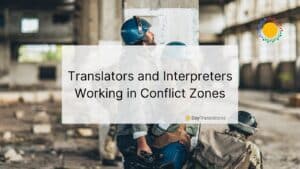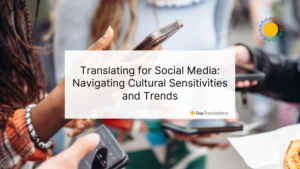As you might well know, the performance levels of thoroughly trained staff are significantly higher than those who receive little or no training in the workplace. Increased performance leads to higher customer satisfaction ratings, increased trades, and higher profits for the company.
But since the modern workforce is becoming more and more diversified, it’s essential to translate your organization’s training materials. Although you might not have an immediate need to facilitate multilingual teams, it might arise in the near future and if you decide to expand your business to the global market space.
Your staff and clientele have specific and diverse needs. If you want to propel your organization into the best position to operate internationally, translating your training materials into more than one language is the best way to meet your targets and set the stage for success.
Read on to learn more about the importance of overcoming cultural barriers and just why it’s essential to work with professional translators that can localize (instead of just provide lexical, word-for-word translations) your corporate training!
Benefits of Using Multilingual Training Materials
The benefits that come with offering your corporate training in more than one language are bountiful. Companies that have international divisions and those looking to tap into a broader market must consider translating their training into the languages their employees need.
Here’s a look at some of the benefits you can expect to see when translating your training materials:
Reduced Training Costs
If your training materials are only offered in English, and you have a workforce that also comprises non-native English speakers, it’ll take them much longer to get to grips with the terminology of your content. The pace at which you present the training will have to slow down too, and the longer it takes your team to complete the course, the more the training process will cost you.
If, however, you translate the material into a variety of language that makes it easier for the recipients to understand, you can step up the pace of training and save on training costs.
Safer Workspaces
It’s been proven that the number of workplace accidents, injuries, and fatalities can be reduced by ensuring that all staff is trained on workplace safety in their native language. The Occupational Safety and Health Administration (OSHA) estimates that the language barrier contributes to as much as 25% of job-related accidents.
Not only will translating your training materials enhance your workforce’s productivity, but it’ll also ensure you’re keeping your staff as safe as possible.
Increased Productivity
Learners that have access to training materials in their native language are more focused on the actual subject matter instead of trying to interpret the material. By having your corporate training translated, you’re eliminating the risk of your staff members misinterpreting the content and clearing the way for them to be more productive.
Easier Expansion into Global Markets
In a world that’s more connected than ever before, it’s essential to be linguistically diverse if you want your brand to stand out from the masses. Regardless of whether you already have established relationships or you’re looking to expand into foreign markets, offering your corporate training in various languages is a great approach.
Important Considerations for Translating Your Training Materials
Translating your corporate training isn’t as easy as copying and pasting your content into Google Translate. Here’s what you need to keep in mind to ensure your materials are as effective and efficient as possible:
Localization Should Be the Main Focus
Merely translating content can see it losing its message and impact since lexical translations rarely capture the essence of the content. You need to pay heed to contextual nuances of language, and that can only be done if you localize your training.
Hypothetically speaking, your brand message can have the opposite effect to the one you intended if you ignore localization. What’s acceptable in one language and culture might be taboo in another, and the last thing you want to do is launch a rebranding campaign to amend an accidental mistranslation.
Keep It Generic
Although it’s important to create dynamic, engaging, and impactful training content, it shouldn’t be overly specific. The aim should be to minimize references to cultural humor and situations that apply to particular audiences and ethnic groups that share similar cultural associations. Again, this is something that a localization expert can help you avoid.
By localizing your content, you’ll ensure that it resonates with your target audience and avoids using terms and phrases that might be offensive or misleading to foreign audiences.
Wrapping It Up
Comprehension increases when learners can focus on the content of your training materials in their native language without first having to mentally translate the information into their first language. Misinterpretation can lead to reduces productivity, lost revenue, and more seriously, injury and fatalities.
By working with professional translators and localization experts like Day Translations, you can ensure that your corporate training is easier to understand for a much wider audience, which, in turn, can help boost productivity within your teams and increase your brand’s reach!












Sorry, the comment form is closed at this time.